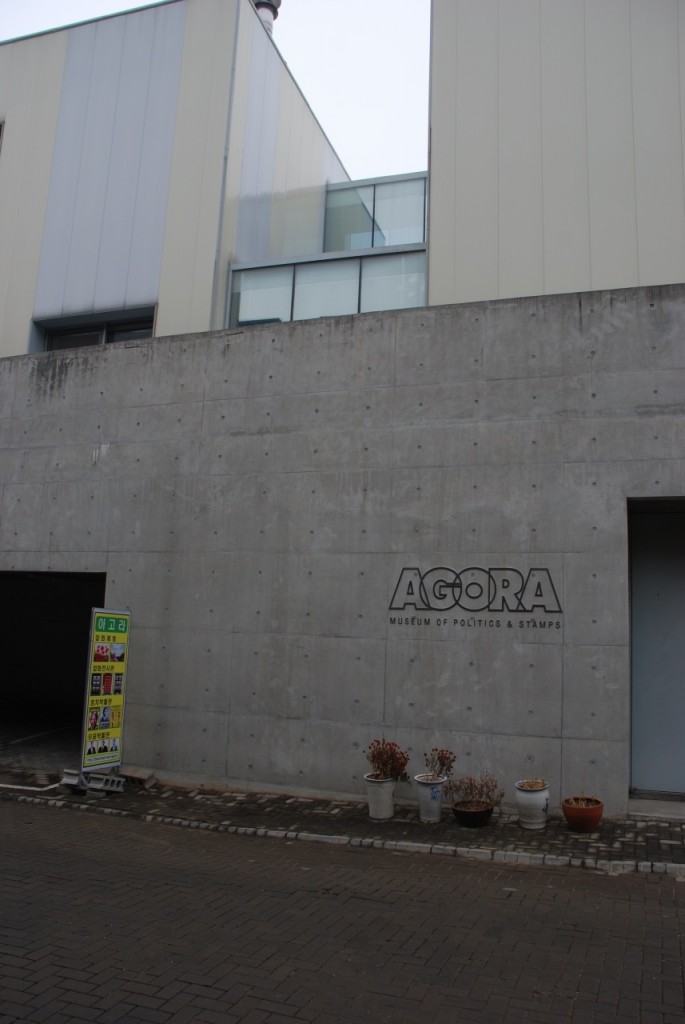
Where to begin with the topic of gentrification?
Of course, in our city, right here in our very neighborhood where we are implicated.
No.
We will get to that.
Suppose we start in a future-primitive state: something beginning from a point far too under-urbanized than we conventionally conceive in such a process, resulting in something far too over-developed, centrally-marketed and artificial, not to mention out of the city, to speak the gentrified language.
“Now above three hundred seventy members: writers, artists, cineastes, architects, and musicians are building their artistic spaces, houses, work rooms, museums, galleries. Heyri, the name of village, is quoted from the title “the Sound of Heyri” which is the traditional farming song at Paju province in Gyeonggi-do.” From the Heyri Village website.
Does this science-fiction vision help us to hone in on the gentrification discourse proper to our locality? On the globalizing hallucinations behind the liquidation of existing communities into higher capital-intensive zones? Generalizations which depend in part paradoxically on the marketability of the specificity of localities? Does such a friction-free transference of usage (from farmland to hyper-constructed culture/leisure district) point out anything about the role or means of the locality of resistance?
Hold on, who are we but the four horsemen? I told you, we’re not there yet.
Heyri lies about an hour north of Seoul by bus, nearly at the border of North Korea. I visited the town December 1st 2010, during the cross-border military crisis. Despite its proximity to the DMZ, there was hardly any sign of the international tension in Heyri. It was only a bit wintry, the off-season in a wonderland.
Beginning about 5 years ago, the area was converted en lump into an art-district-as-lifestyle-product. The spatial layout is akin to a suburban development, though with (probably intentionally) meandering and chaotic roadways connecting hundreds of detached, independent museums and galleries, integrated with a surfeit of cafés, restaurants and shops. The architecture of each mansion is unique, varyingly designed by the entrepreneurs themselves, or the products of bona fide architects, but in their collective emphasis on funkiness and unmistakably-modern conceits, each folly manages to blend in with all the rest. People do live in Heyri, but the majority of the visitors (apparently throngs come summertime) drive up from Seoul in their family sedans; thus the whole area is conceived as an amusement park and experience zone for the middle class and their children.
I was there to visit a space called “Farming is art“, whose owners had previously been the proprietors behind “Ssamzie space,” a well-known and respected alternative space in Seoul which had folded in recent years due to bankruptcy of their former commercial design and retail enterprises. As I understood, the newly configured company is basically composed of two branches: an art space, department store and restaurant incorporated into the general theme of ecological living, and an adventureland for children called “Dalki.” A friend living in Seoul for the past years opined that it would most likely prove to be a smart business move, as the popularity around “green living” gathers momentum in an as-yet underdeveloped market. And in terms of art, the support for the exhibitions and residency programs they had run (and would continue to run) had always been in cooperation with the commercial side—a very “contemporary” institution, from some perspectives, ie. neither categorically for-profit nor not-for profit, and (either intentionally or circumstantially) bound up in the symbolic benefits of art. (I use the word contemporary within the international ambiance of fragmentation of state-funding, but what I just mentioned does bring up the question of familial patronage in older forms; an open question.)
But the new form of the company seemed to also be about bringing together the production of the commercial side with the artistic output, although at this early stage it was either quite a symbolic synchronization (cabbage-themed exhibition) or quite craft-based (the “artist studios” in the mall-like building that supposedly offers free space for a share of sales) in its results. As certain examples of contemporary art practice gradually gain a greater consciousness of ecology, or adopt a more active and less cynical regard toward the obviously problematic and growing ‘green’ ideology, art works and systems productively experiment more with agriculture, consumerism and functionality. A space that would support these activities as contemporary art and in so doing appears like a Discovery Centre for the middle class, could be seen to be in a good position as a sleeper-cell in the conceptual border-town between cynicism and activism. Activism would here mean altering lifestyles and politics, but further than that, the creation of works that change or broaden the context of art production.
But I don’t think this is the place for that.
Any singular space in Heyri is worked into an elaborate, remote staging of culture as spectacle, leaving no room for an everyday experience that isn’t accounted for within a master plan of branded experience. For those familiar with Beijing, it appears as a 798 art district on steroids, built from scratch without the requisite even to pay lip-service to the factories (or avant-garde artists) it replaced. In this case replacing farms (which don’t leave a very strong trace of their prior existence) with an art space that advocates farming is really hyperreal. I wouldn’t say it’s uninteresting, or blasphemous, but of those forms of activism that find in art a living and embracing (and challenging) context, we find in Heyri only a distant echo, in the progressive act of consuming an extremely delicious dish of organic vegetarian tteokbokki.
Let’s gradually come back from our touristic experience to where we are, who we are, and what our agenda is. We cannot just avoid the question of whether we are so much the better for our context, or assume to know the answer. After all, we grow food, we talk about farming, we D.I.Y. just like in the commercials.
But it’s not only about us or our intentions, either.
Of differing levels of embeddedness and upward mobility, we are or could be different, problematic, well-intending red-breasted robins, we are or could be natural harbingers of an economic survival-of-the-fittest—but the virgin forest hasn’t existed for some time.
Despite what from capital’s point of view looks like similar uses of unused land, we need the sobering return from a science-fiction account of gentrification to one crawling with details, to one where the seductive definitions of the experience economy collide with the less efficient definitions that encompass waiting, character-building, eating one’s vegetables—challenge. To be continued…
Local flavour.
The front door of “Farming is Art’s” facilities (winter period).
View from the roof.
A green exhibition in their exhibition spaces.
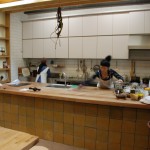
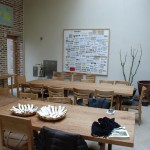
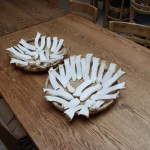
The “Farming is Art” building has a workshop kitchen for teaching classes on organic cookery.
The artist studios, where spaces are given to artisans and Ssamzie shares in profits from product sales.
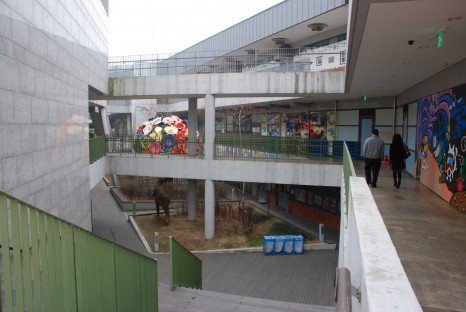
The mall building comprising children’s amusement facilities, restaurants, and still much vacant space.
A pig is kept on the roof next to Dalki World.
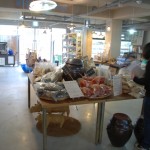
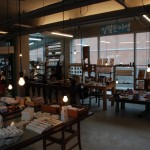
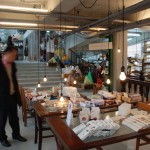
The “co-op store”, also run by the “Farming is Art”/Ssamzie people in an independent building across the village, is a department store of local and ecological foods, handmade clothing and shoes and crafts made from recycled materials.
The garden patch; compost generated from the café waste, housed in the shed, is used to grow barley in a demonstration plot next to the co-op store.
Some context slipped in: a neighboring museum for Dokdo Island culture; the island disputed between Japan and Korea.
Next to the Dalki World, a statue commemorating the little boy who self-immolated to protest the North Koreans.

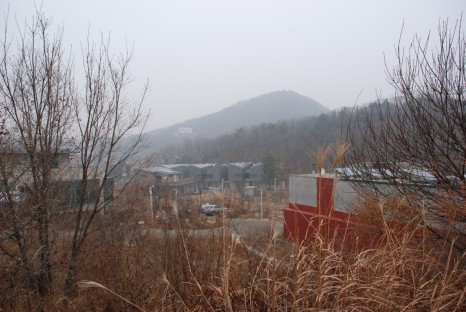
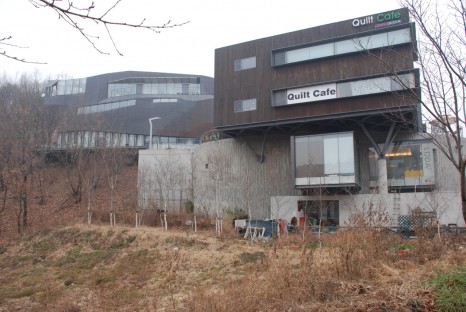
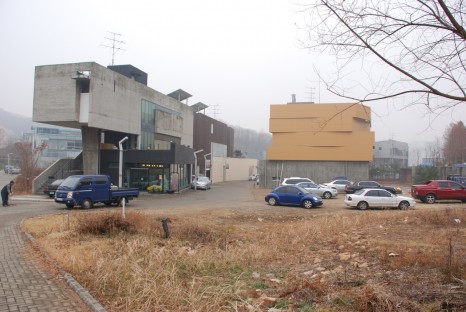
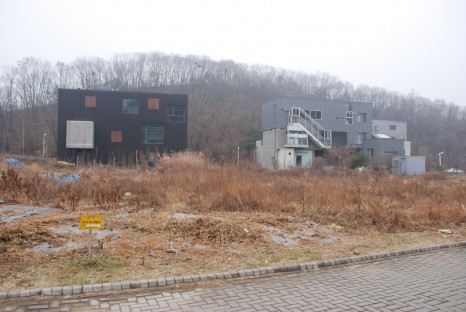
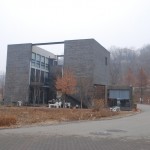
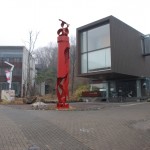
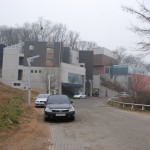
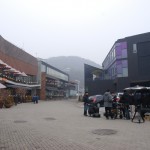
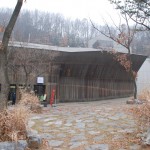
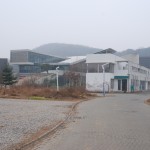
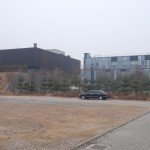
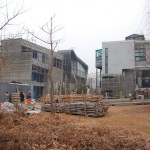
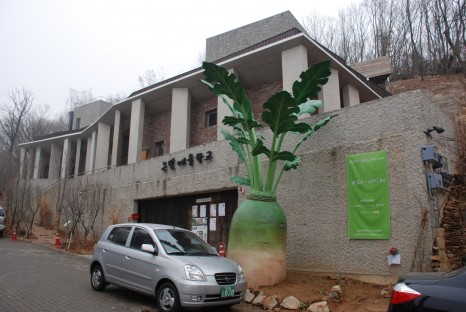
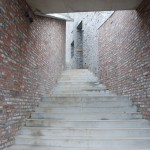
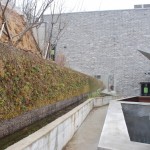
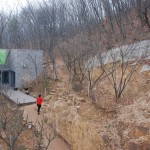
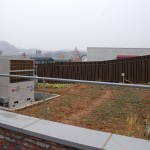
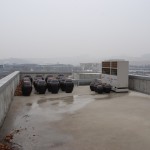
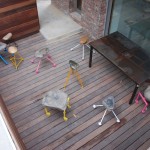
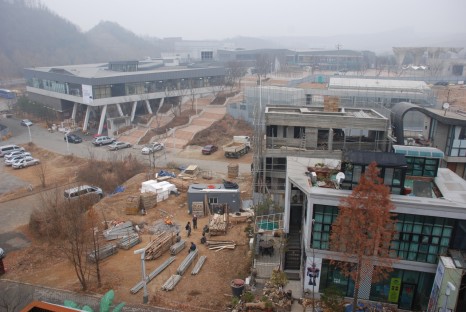
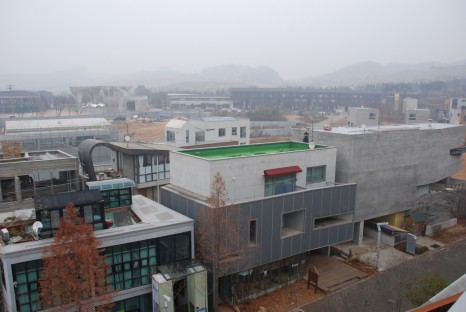
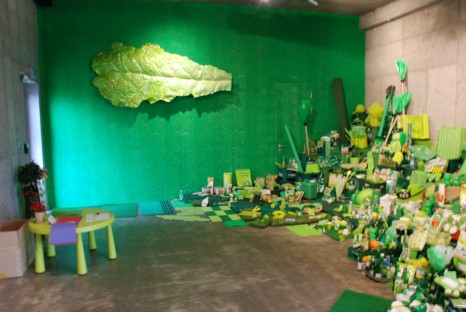
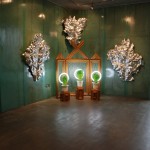
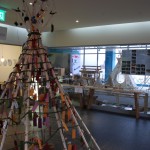
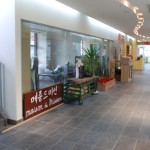
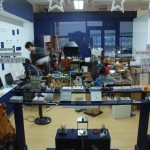
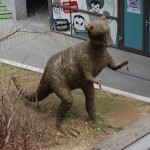
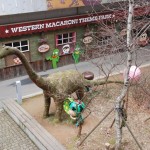
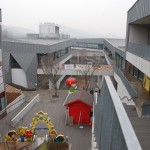
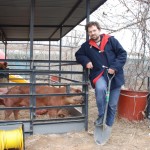
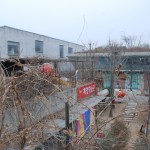
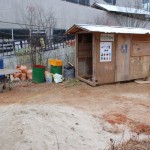
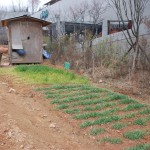
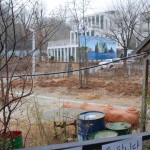
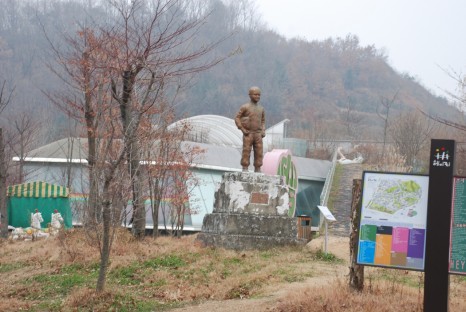
 时间 posted on: 7 February 2011 |
时间 posted on: 7 February 2011 |  发布者 author:
发布者 author: 
 分类 filed under:
分类 filed under:
February 7th, 2011 - 19:08
[…] This post was mentioned on Twitter by Christian, iwish icould. iwish icould said: [家作坊 HomeShop] Gentrification Disco, vol. 0: Where to begin with the topic of gentrification? Of course, in our … http://bit.ly/gbjsxH […]
February 9th, 2011 - 19:33
For me, gentrification suggests an insidious insinuation and transformation of a situation, initially through a process of “filling a gap” or perhaps “taking advantage of an opportunity.” At that stage not necessarily a negative activity, but one which opens the door—provides justification—for the “real” “gentry” to usurp those conditions which initiated it (your “…lip-service to the factories (or avant-garde artists) it replaced”).
This community in Seoul suggests something far more socially violent and total though. It seems to simply ignore any pre-existing situation, and simply drop an art district into place. Knowledge of the specific development of the area prior to its wonderland makeover might suggest otherwise, but I would think this example cannot really be called gentrification (although now it might have that affect on surrounding areas).
Although I would question using words like “natural,” and whether there ever was such a thing as “virgin forest,” I agree. On the whole I think you can feel positively about that.
February 28th, 2011 - 17:56
[…] commenting on his original post about his visit to South Korea’s Heyri village, Michael Eddy asked me to contribute further on […]
March 4th, 2011 - 12:51
[…] as I believe it is generally understood. But, going beyond this and thinking affectively, my original comment on Michael’s post […]
March 11th, 2011 - 14:38
[…] of transformation losing its qualities as everyday and approaching spectacle, gentrification. As Michael Eddy says: “… worked into an elaborate, remote staging of culture as spectacle, leaving no room for an […]